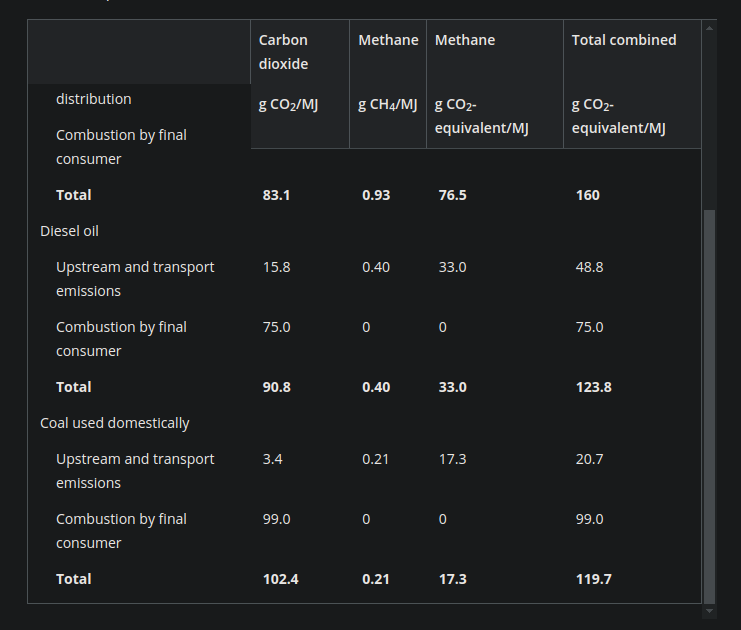Avid Amoeba
- 53 Posts
- 1.11K Comments
Valve is doing this? Not Android since 2008?
Heck we know people don’t give a shit what’s under the covers since at least the switch between Windows 98 and 2000/XP, the latter being a very different OS. It could have been BSD or Linux and people wouldn’t have bat an eye if the start menu looked the same and Word, Corel Draw, Photoshop and AutoCAD worked.

 2·2 hours ago
2·2 hours agoI haven’t seen any report of missiles targeting populated areas. Only military targets. So I think we can scratch that from the equation. Either they let everything that was targeting the base fall or they were defending it and some got through. Doesn’t make sense that they intentionally let some hit the hangars and runways if they were defending the base. I doubt they can tell exactly where every projectile is gonna fall. It’s possible that they focused more on the other base that was being targeted. But I find it unlikely that they didn’t defend this base given they use it for their F35 fleet. At the very least there could have been enough damage to put it out of service for a while.

 17·17 hours ago
17·17 hours agoIt’s still only a few reps.

 232·1 day ago
232·1 day agoSo it seems Iran overstated the accuracy of their missiles and Israel understated how many got through.

 5·1 day ago
5·1 day ago“Create an Haitian cooking a tabby cat in a spit fire, the background should look like a typical Ohio town”

 2·1 day ago
2·1 day agoAnd the capital gathered through this automation won’t redistribute itself to keep people fed without a fight.

 13·1 day ago
13·1 day agoOh the units conversion looks promising. Might replace Ultra Measure Master for me. I think it doesn’t quite work yet.
Is the author’s username a play on “jerkoff”?No his name is Jost Herkenhoff.
It might also save it from shit controllers and cables which ECC can’t help with. (It has for me)

 3·1 day ago
3·1 day agoPosting this further up for visibility.
Maybe I’m stupid but there’s this table:

It seems like they’re not just counting the combustion emissions in that number.
Then there’s also this, which explicitly talks about fuel development emissions:
The carbon-dioxide emissions just from combustion are substantially greater for coal, 99 g CO2/MJ versus 55 g CO2/MJ for LNG. Total carbon-dioxide emissions from coal, including emissions from developing and transporting the fuel, are also greater than for LNG, but the difference is less, 102.4 g CO2/MJ for coal versus 83.1 g CO2/MJ for LNG (Table 4). This is because of greater energy costs and, therefore, higher emissions of carbon dioxide for developing and transporting the LNG compared with coal. Methane emissions for LNG are substantially larger than for coal, 76.5 g CO2-equivalent/MJ for LNG compared with only 17.3 g CO2-equivalent/MJ for coal (Table 4). As presented in Section 2, this result for methane emissions for coal is quite robust across regions, including China and Poland.55, 56 Consequently, total greenhouse gas emissions are 33% larger for LNG than for coal for the cases of average tanker-cruise lengths, 160 g CO2-equivalent/MJ for LNG versus 120 g CO2-equivalent/MJ for coal (Table 4).
Did you look at the paper or am I grossly misunderstanding something?

 2·1 day ago
2·1 day agoMaybe I’m stupid but I don’t see that in the abstract. I just see a GWP_20 potential for coal in the abstract. Further down there’s this table:

It seems like they’re not just counting the combustion emissions in that number.
Then there’s also this, which explicitly talks about fuel development emissions:
The carbon-dioxide emissions just from combustion are substantially greater for coal, 99 g CO2/MJ versus 55 g CO2/MJ for LNG. Total carbon-dioxide emissions from coal, including emissions from developing and transporting the fuel, are also greater than for LNG, but the difference is less, 102.4 g CO2/MJ for coal versus 83.1 g CO2/MJ for LNG (Table 4). This is because of greater energy costs and, therefore, higher emissions of carbon dioxide for developing and transporting the LNG compared with coal. Methane emissions for LNG are substantially larger than for coal, 76.5 g CO2-equivalent/MJ for LNG compared with only 17.3 g CO2-equivalent/MJ for coal (Table 4). As presented in Section 2, this result for methane emissions for coal is quite robust across regions, including China and Poland.55, 56 Consequently, total greenhouse gas emissions are 33% larger for LNG than for coal for the cases of average tanker-cruise lengths, 160 g CO2-equivalent/MJ for LNG versus 120 g CO2-equivalent/MJ for coal (Table 4).
Did you look at the paper or am I grossly misunderstanding something?
Unless you need RAID 5/6, which doesn’t work well on btrfs
Yes. Because they’re already using some sort of parity RAID so I assume they’d use RAID in ZFS/Btrfs and as you said, that’s not an option for Btrfs. So LVMRAID + Btrfs is the alternative. LVMRAID because it’s simpler to use than mdraid + LVM and the implementation is still mdraid under the covers.

 26·1 day ago
26·1 day agoIt is marketing and it does have meaningful connection to the litho features, but the connection is not absolute. For example Samsung’s 5nm is noticeably more power hungry than TSMC’s 5nm.
And you probably know that sync writes will shred NAND while async writes are not that bad.
This doesn’t make sense. SSD controllers have been able to handle any write amplification under any load since SandForce 2.
Also most of the argument around speed doesn’t make sense other than DC-grade SSDs being expected to be faster in sustained random loads. But we know how fast consumer SSDs are. We know their sequential and random performance, including sustained performance - under constant load. There are plenty benchmarks out there for most popular models. They’ll be as fast as those benchmarks on average. If that’s enough for the person’s use case, it’s enough. And they’ll handle as many TB of writes as advertised and the amount of writes can be monitored through SMART.
And why would ZFS be any different than any other similar FS/storage system in regards to random writes? I’m not aware of ZFS generating more IO than needed. If that were the case, it would manifest in lower performance compared to other similar systems. When in fact ZFS is often faster. I think SSD performance characteristics are independent from ZFS.
Also OP is talking about HDDs, so not even sure where the ZFS on SSDs discussion is coming from.

 53·1 day ago
53·1 day agoGreat news for EU auto workers!

 3·1 day ago
3·1 day agoIs this true? Can someone cross-check it?

 174·1 day ago
174·1 day agoDoesn’t uBlock Origin already have a Manifest V3 version of the extension?













This is scarier than the original.